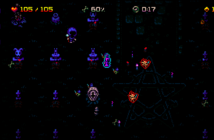By Stephen Skipper
Over the past two decades, one of the most successful gaming franchises involves traveling all over various regions and collecting countless creatures to battle and bond with: Pokémon. Launched 20 years ago this year, the games follow the same basic premise. The character is given a choice of one of three starter Pokémon and goes along the region catching more Pokemon to battle other trainers with. Along the way, there are certain gyms to conquer and badges are given upon victory. After collecting eight badges, they take on the ultimate trainers and attempt to become the champion of the entire region.
In honor of the franchise’s 20th year, fans were treated with a special release of the original Red, Blue, and Yellow versions on the 3DS on the exact day that Red and Green were released. In addition, a whole new generation was announced and Sun and Moon versions were named to be the next games, due out in the middle of November. Also this year was the release of the highly anticipated mobile game, Pokémon Go, allowing trainers to catch their own Pokémon in real life.
The game had humble beginnings. Game creator Satoshi Tajiri had a childhood hobby of catching tadpoles and insects outside his home and wanted to share the joy he had in it. Together with Ken Sugimori, Tajiri formed game developer studio Game Freak. When Tajiri discovered the Game Boy system, he and his team started trying to pitch their idea.
It was not easy at first and failed several times. It was not until new friend Shigeru Miyamoto gave the pitch that gaming giant Nintendo decided to roll the dice and fund the project. After six years of development and near bankruptcy for Game Freak, the first Pocket Monsters game, as the series was first called in Japan, was ready to be released.
On February 27, 1996, the first two games, Red and Green versions, were released to the Japanese market. The games had a modest sale at first, but upon the revelation of a special event Pokemon, Mew, the sales spiked. As a result of this, Pokemon Blue, was released, a reskin of the originals with improved graphics and sounds. The games spawned trading cards, manga volumes, and an anime series.
The success of the anime also prompted creators to develop a special edition of the game titled Pokemon Yellow, following the story of the main character of the show, Ash and his trusty Pikachu. Pokemon was becoming a phenomenon and was ready for a new market. In September 1998, Red and Blue versions were launched in North America under the now iconic catchphrase “Gotta Catch ‘em All!” The anime had also helped boost the franchise up and soon made its silver screen debut with “Pokémon The First Movie: Mewtwo Strikes Back” in July 1998 in Japan and November 1999 in America.
While the first generation was successful enough, fans were clamoring for more and were treated in November 1999 with the sequels Gold and Silver versions. This solidified the trend of games coming out in pairs. These games introduced several staples for the games to come: a time
cycle, shiny Pokemon, and the ability for Pokemon to be different genders. Like with Yellow, there was a third game, Crystal, which combined elements of the original two.
With the new system, the Game Boy Advance, came the next generation of games with Ruby and Sapphire in 2002 with its companion Emerald in 2004. These games were a total overhaul from the previous installments with better graphics and sound than ever before. Fans were also treated to a special remake of the originals with FireRed and LeafGreen that same year.
As with the previous generation, a new gaming system, the Nintendo DS brought new games, Diamond and Pearl, in 2006 and Platinum in 2008. These installments started introducing the 3D aspect into the games. The next year another set of remakes were released with HeartGold and SoulSilver.
The year 2010 brought large changes to the franchise. There was the release of Black and White in September of that year and for the first time since Red and Green, no old Pokemon would be available to players in the main story of the game. In addition, going against the tradition of basing regions around areas of Japan, these games would be similar to America, specifically New York and the surrounding areas. The sprite of the Pokemon would also be static, meaning it was animated on the screen. Another big change was the companion game.
Unlike its predecessors, the fifth generation did not have one in specific but rather a pair of sequels for each game. Black 2 and White 2 would be released in June of 2012 and would continue the story of the first two games, reminiscent of what the second generation did.
The most recent generation debuted back in 2013 along with the debut of X and Y versions with the Nintendo 3DS system. These were the first games to share a worldwide release as Japan had usually received the games a week before any other nation. Instead of any sort of sequel or companion, there was no follow up to these games and fans were given a remake of generation three with Omega Ruby and Alpha Sapphire in 2014, another worldwide release.
The franchise has seen global success and as of 2015 has garnered almost $58 billion in sales from all their mediums and is a mainstay in popular culture and unit sales reaching the tens of millions. There is no denying the impact the franchise has had on the gaming community and the world overall. With these new games the future still looks bright and there seems to be no end in sight.




